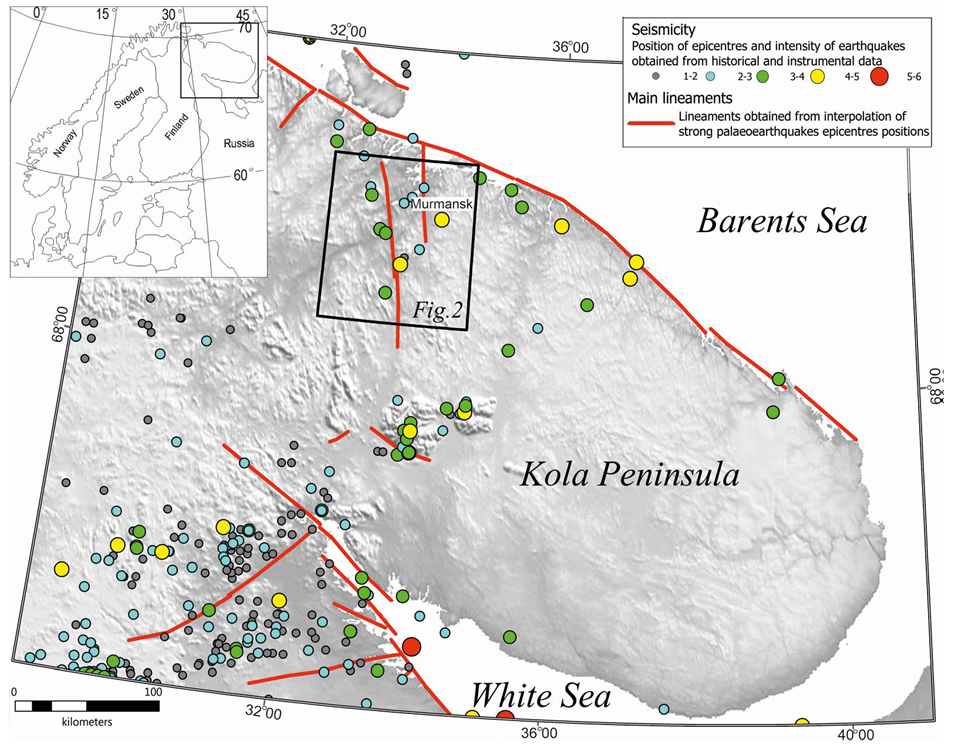The results of paleoseismological studies in the area south of the city of Murmansk are discussed. As the main seismogenic zone, a system of strike-slip and reversefaults of the NNW strike along the Kola rivervalley is identified here. Radiocarbon dating identified three episodes of high seismic activity: from 9500 to 10500 years ago, from 892 to 1182 and about 300 years ago.
The results of application of the Peak Ground Velocity Estimation Method (PGVEM) shows that earthquakes with magnitude Mw ≈ 6.0–6.5 could have occurred in the area. The seismotectonic position of these strong Late Glacial and Holocene earthquakes is consistent with the data on the historical events of 1772 and 1873. In combination with other data on paleoseismicity in the Kola region, these data point to a more complex spatial and temporal history of postglacial seismicity in the North-Eastern Fennoscandia. Strong earthquakes occurred here not only during the deglaciation and immediately after it, but in the subsequent periodalso. Velocity of glacial isostasymovements had sharply decreased by now, and thus, these earthquakes can be connected with other tectonic processes.


